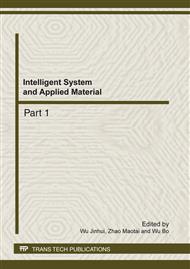[1]
J. Lu and F. Dawson, Analysis of Eddy Current Distribution in High Frequency Coaxial Transformer with Faraday Shield, IEEE Trans. on Magnetics, 42(10): 3171-3173, (2006).
DOI: 10.1109/tmag.2006.880093
Google Scholar
[2]
J. Lu, F. P. Dawson and S. Yamada, Application and analysis of adjustable profile high frequency switch mode transformer having a U-shaped winding structure, IEEE Trans. on Magnetics, 34(4): 1345-1347, (1998).
DOI: 10.1109/20.706543
Google Scholar
[3]
K.W. Klontz, and et. . al, An active cooled 120kW coaxial winding transformer for fast charging electric vehicles, IEEE Trans. on Industry Applications, 31(6): 1257-1263, (1995).
DOI: 10.1109/28.475695
Google Scholar
[4]
J. Kuang, X. Ruan, and X. Ren. Analysis of Skin and Proximity Effects onWinding Losses in PlanarMagnetic Components, Proceedings of the CSEE, 26(5): 170-175, (2006).
Google Scholar
[5]
Hurley W G,Gath E,Breslin J G.Optimizing the AC resistance of multilayer transformer windings with arbitrary current waveforms, IEEE Transactions on Power Electronics, 15(2): 369-376, (2000).
DOI: 10.1109/63.838110
Google Scholar
[6]
Sullivan C R.Computationally efficient winding loss calculation with multiple windings,arbitrary waveforms,and two-dimensional or three-dimensional field geometry, IEEE Transactions on Power Electronics, 2001, 16(1): 142-150.
DOI: 10.1109/63.903999
Google Scholar
[7]
Forest, E. Laboure, B. gelis, Bertrand et al. Design of Intercell Transformers for High-Power Multicell Interleaved Flyback Converter, IEEE Transactions on Power Electronics, 24(3): 580-591, (2009).
DOI: 10.1109/tpel.2008.2010768
Google Scholar
[8]
J. A. Ferreira. Electromagnetic Modeling of Power Electronics Con-verters, Norwell, MA: Kluwer, (1989).
Google Scholar
[9]
Dowell P. Effects of eddy currents in transformer windings,. Proceeding of IEE, 113(8): 1387-1394. (1966).
Google Scholar
[10]
J. A. Ferreira Improved analytical modeling of conductive losses in magnetic components, IEEE Trans. Power Electron., 9(1): 127–131, (1994).
DOI: 10.1109/63.285503
Google Scholar


